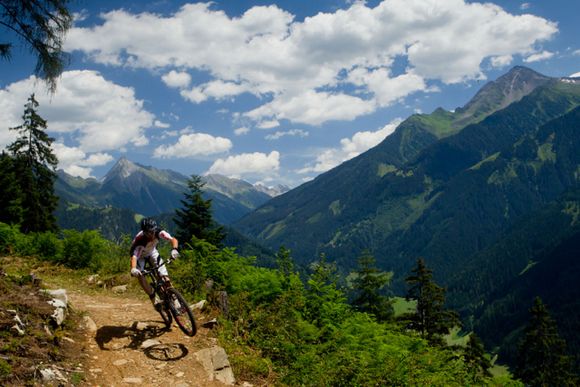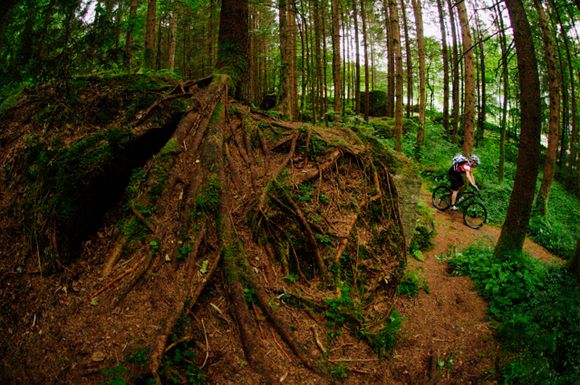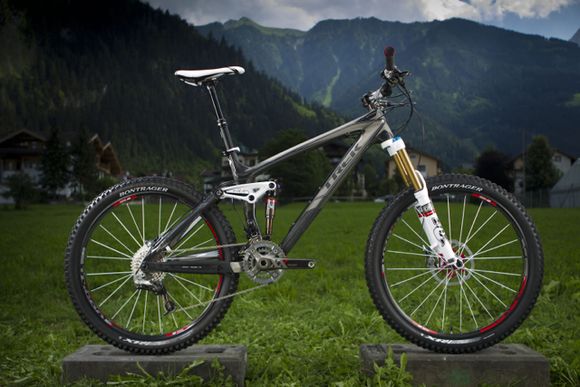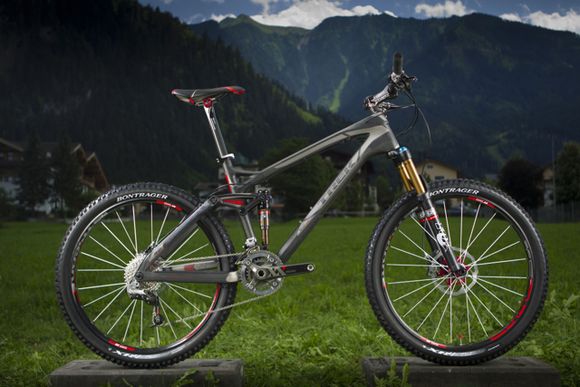
Late last summer Trek invited me to Mayrhofen, Austria, to take a look at its 2012 mountain bike line. I was initially skeptical: Trek, after all, was peddling some pretty ordinary mountain bikes up until a few years ago. But based on my experience with their mountain line last year—at first I was doubtful of the Top Fuel 9.7 I reviewed but ended up very nearly prepared to trade my wife for one by review's end; and I actually ended up purchasing a , which became my go-to ride for awhile—I knew I had to go.
Judging by what I saw in Mayrhofen, Trek has made some giant strides in crafting a full line-up of great mountain bikes in recent years. And now that test bikes have arrived and I've spent some time on them, I can confirm that the Waterloo, Wisconsin-based company is offering some extremely hot bikes next year.

On arrival in Austria, Trek proclaimed much of the mountain line to be “all new,” and despite carryover in names, most of the bikes deserve the billing as they received major overhauls and lots of new tech. Perhaps the biggest news is the adoption of the company's DRCV shock technology into Fox forks. The system, which adds a built-in second air chamber to accomodate bigger hits, worked great on last year's Rumblefish, so we were excited to see the platform expanded. It will feature in select models of the Remedy, Fuel EX, Lush (more on that shortly), and Rumblefish.
The company also debuted the Mino Link, a flip-flop plate at the junction of the seat stays and pivot that allows a rider switch the head tube angle by half a degree. It's so simple (just the turn of two bolts) that the change can be made on the trail, meaning you can trail tune your bike for more climbing or more descending midway through a ride. The feature will appear on the Remedy, Slash, and Session.

Trek brought three sets of demo bikes to Austria, which meant three separate test rides. The first, aboard the Remedy, was led by none other than , whose laidback demeanor and massive stache belies just how incredibly fast he is going downhill. Up we went on two sets of gondolas before we were dumped into rugged, steep bike park terrain that had me wondering what I'd gotten myself into. Thankfully the Remedy 9.8 was up to the task. With the head tube slackened to 67.5 degrees (flippable to 67 with the Mino Link) and internal cable routing for the Rockshox Reverb dropper post, this 150mm technical trail bike allowed me to ride trail so precipitous that I'd normally have had difficulty even hiking down. But with 100 grams lopped out of the frame since 2011, the bike was still plenty light for the hour or so of high-altitude climbing we did. The day's highlight: as a group of journos picked our way down a rooty hillside so steep that switchbacks were barely possible, Schnell came screaming through on the fall line. No further question about how capable this bike was.

On day two we traded the gondolas for our own pedal power and were presented with the Fuel EX to do the job. The Swiss Army Knife of the Trek collection, this 120mm trail bike follows the Remedy's lead with a slacker head tube angle (now 68 degrees) for more confident downhill manners. There's all new tube shapes for improved comfort as well as the MIno Link for even more versatility. The carbon 9.8 I rode felt downright feathery (in the 25 pound range, I'd guess), which was a good thing because, with the legendary Travis Brown at the helm, we scrabbled up 1,500 vertical feet in under three miles on trails that were occasionally so steep it was tough to keep the front wheel planted. No complaints about the bike's climbing prowess, but I will say I never felt wholly comfortable on the steep, loamy, switchback heavy descent. Brown and others were absolutely screaming down this, however, and I was left feeling that the choppy sensations I had were mostly about suspension setup.

The third ride, aboard the 2012 Superfly 100, wasn't as well-attended as the others, partly because 29ers haven't quite caught on in Europe yet. Of course all the American journos were on hand, and the few Euro writers who turned up were floored. The Superfly gets a few important upgrades this season, most notably a 142 x 12 thru axle in back (which is smartly convertible to standard QR in a pinch), a 15mm thru axle DRCV fork up front, and an expansion of model options to four (two carbon, two aluminum). On the techy test circuit, which packed punchy climbs, fields of babyheads, two foot steps, and just about anything else you can think of into a few short miles, I was wowed by the stiffness added by the new axles. Steering, already precise on last year's model, is even more direct and confident on this verion. I've also been riding a test version of this bike here in Santa Fe, and I'm convinced that this is one of the finest all-around bikes in Trek's entire mountain line-up.
Trek showed a few other notable bikes in Mayrhofen. The new , a 160mm crossover bike aimed at the burgeoning enduro downhill riding scene, is both lighter and better descending that the Scratch Air it replaced, according to Trek. In the 120mm , women get their own version of the Fuel EX, with better standover, a lower center of gravity, and shock leverage ratios tailored to the female rider. And at just 35 pounds, the new carbon (also available in aluminum), a 210mm DH bike that delivered Aaron Gwin to multiple World Cup wins last season, is almost too light and capable to believe.
I'm now in possession of a 2012 Superfly 100 Pro and a Remedy 9 and will diligently beat the crap out of them over the next months. Stay tuned for the results.
–Aaron Gulley